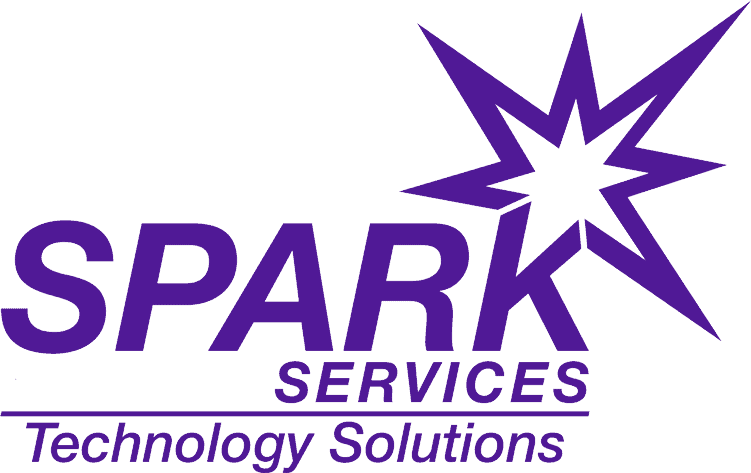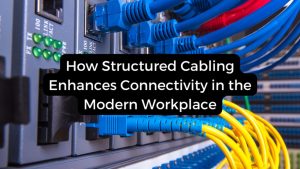Introduction
The rapid growth of technology has revolutionized the way we live and work, but it has also brought to light the environmental challenges posed by the tech industry. From energy consumption to electronic waste, the ecological footprint of technology is substantial. In response to these challenges, sustainable practices have become a global trend, and they are no exception in the field of structured cabling. In this blog, we will delve into the world of structured cabling and explore the eco-friendly practices that can transform our IT infrastructure, making it more sustainable for the future.
The Need for Sustainability in Tech
The tech industry has made remarkable advancements in recent years, but these achievements have come at an environmental cost. Data centers, network equipment, and IT infrastructure consume massive amounts of energy, contributing to greenhouse gas emissions. Additionally, the rapid turnover of electronic devices leads to electronic waste, further burdening the environment. In this context, sustainable tech practices have become more crucial than ever.
Structured Cabling: The Backbone of IT Infrastructure
Structured cabling systems are the unsung heroes of our interconnected world. They provide the framework for data centers and office networks, enabling the seamless flow of information. However, the traditional practices in structured cabling have often fallen short in terms of sustainability. Inefficient equipment and cable management can lead to increased energy consumption and electronic waste.
Green Practices in Structured Cabling
To address these sustainability challenges, the tech industry has been exploring various green practices in structured cabling. These practices focus on reducing energy consumption, minimizing electronic waste, and improving cable management.
One of the key components of green cabling is energy-efficient equipment. Low-power consumption switches and routers have become increasingly popular, helping to reduce the carbon footprint of data centers and network facilities. Furthermore, the use of energy-efficient cabling materials, such as fiber optics, has gained prominence for their ability to transmit data efficiently with minimal power usage.
Reducing electronic waste is another critical aspect of sustainable structured cabling. Modular and reusable cabling solutions allow organizations to adapt and expand their IT infrastructure without constantly replacing cables and components. Additionally, responsible disposal and recycling of outdated cabling materials contribute to minimizing environmental impact.
Efficient cable management and organization play a pivotal role in green cabling practices. Well-organized cabling not only improves airflow and reduces energy consumption but also makes maintenance and troubleshooting easier, ultimately extending the lifespan of equipment.
Sustainable Materials and Technologies
Sustainable structured cabling also relies on the use of eco-friendly materials. Cable sheathing made from recycled or recyclable materials is becoming more common, reducing the environmental impact of manufacturing and disposal. Additionally, renewable energy solutions, such as solar-powered data centers and wind energy for network facilities, are being integrated to power the infrastructure sustainably.
Case Studies: Companies Leading the Green Revolution
Several tech companies have taken the lead in implementing sustainable structured cabling practices. Their efforts have yielded impressive results, both environmentally and economically. For instance, by adopting energy-efficient cabling components and renewable energy sources, some data centers have managed to significantly reduce their carbon emissions and operational costs.
The Future of Sustainable Structured Cabling
As technology continues to evolve, so will the practices in structured cabling. Emerging technologies like 5G and the Internet of Things (IoT) will undoubtedly impact the way cabling is designed and implemented. These advancements present opportunities for even more sustainable practices, such as optimizing network efficiency and reducing energy consumption in response to varying workloads.
Government regulations and certifications will also play a vital role in shaping the future of sustainable structured cabling. As environmental concerns gain prominence, regulatory bodies are likely to impose stricter requirements on the tech industry, encouraging the adoption of green practices.
How to Implement Green Cabling Practices
For organizations and IT professionals looking to embrace sustainable structured cabling, there are steps to take. Start by assessing your current cabling infrastructure and identifying areas for improvement. Invest in energy-efficient equipment and consider modular cabling solutions to reduce waste. Implement efficient cable management practices to improve airflow and reduce energy consumption. Lastly, stay informed about emerging technologies and certifications that can help you stay on the cutting edge of green cabling practices.
Conclusion
In an age where technology drives progress, it is our responsibility to ensure that this progress does not come at the expense of our planet. Sustainable practices in structured cabling offer a promising path toward a greener future for the tech industry. By reducing energy consumption, minimizing electronic waste, and embracing eco-friendly materials and technologies, we can transform our IT infrastructure into a force for positive change. Let’s embrace the green revolution and work together to create a more sustainable, connected world. Explore SPARKS Services for more information and to know how we can help you!




